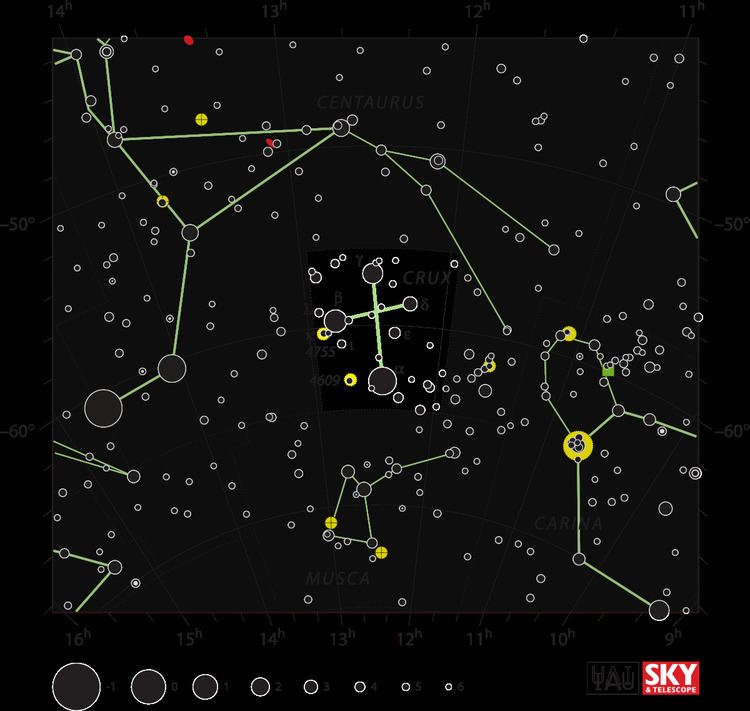Magnitude 2.78 | ||
 | ||
Similar Beta Crucis, Gamma Crucis, Alpha Crucis, Jewel Box, Beta Centauri | ||
Delta Crucis (δ Cru, δ Crucis) is a star in the southern circumpolar constellation of Crux. It is sometimes called Pálida (Pale [one]) in Portuguese. This star is of apparent magnitude 2.79 and is located at a distance of about 345 light-years (106 parsecs) from Earth, the faintest of the four bright stars that form the prominent asterism known as the Southern Cross. Delta Crucis is massive, hot and rapidly rotating star that is in the process of evolving into a giant.
Contents
Properties
This star has a stellar classification of B2 IV, making it a subgiant star that is in the process of evolving away from the main sequence stage. It is now developing into a red giant and will one day end as a white dwarf. Presently it is radiating around 10,000 times the luminosity of the Sun from its outer atmosphere at an effective temperature of 22,570 K, causing it to glow with a blue-white hue. Delta Crucis is a strong candidate Beta Cephei variable and changes its brightness subtly with a period of 1.3 hours. Its rotation is very fast, with a projected rotational velocity of 210 km s−1.
Delta Crucis is a member of the Lower Centaurus Crux (LCC) component of the Scorpius-Centaurus Association, which is an OB association of massive stars that share a common origin and motion through space. This is the nearest OB association to the Sun, with the LCC component having an age in the range of 16–20 million years.
In culture
In Chinese, 十字架 (Shí Zì Jià), meaning Cross, refers to an asterism consisting of δ Crucis, γ Crucis, α Crucis and β Crucis. Consequently, δ Crucis itself is known as 十字架四 (Shí Zì Jià sì, English: the Fourth Star of Cross.).
The people of Aranda and Luritja tribe around Hermannsburg, Central Australia named Iritjinga, "The Eagle-hawk", a quadrangular arrangement comprising this star, γ Cru (Gacrux), γ Cen (Muhilfain) and δ Cen (Ma Wei).
The other three stars of the Southern Cross; Alpha Crucis, Beta Crucis, and Gamma Crucis all have proper names. Delta crucis is named only by its constellation and Greek letter. Some have proposed naming it Dante, since Dante's divine comedy, written before Europeans had seen the southern cross, features a cross visible in the night sky from the southern hemisphere.
δ Cru is represented in the flags of Australia, New Zealand and Papua New Guinea as one of the stars comprising the Southern Cross. It is also featured in the flag of Brazil, along with 26 other stars, each of which represents a state. δ Cru represents the State of Minas Gerais.
